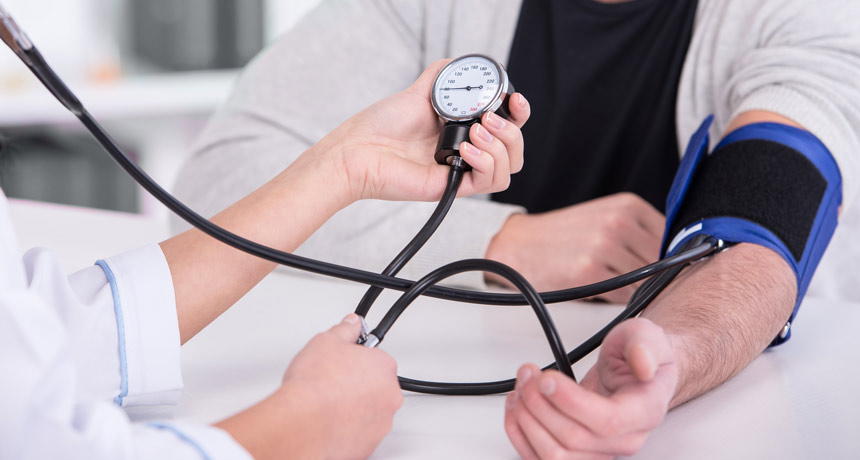Keeping people within U.S. blood pressure guidelines saves lives

The first estimate of how many deaths and heart problems could be avoided under new blood pressure guidelines shows it’s well worth it for the U.S. population to get its blood pressure under control, researchers say.
The new guidelines, announced in 2017 by the American College of Cardiology and the American Heart Association, redefined hypertension as a blood pressure reading of 130/80 or higher (SN: 12/9/17, p.13). The previous threshold was 140/90. As a result, 105 million U.S. adults age 20 and older are now considered to have hypertension, 31 million more than before.
An estimated 334,000 deaths could be prevented annually if those aged 40 and older keep their blood pressure below the new threshold, researchers report online May 23 in JAMA Cardiology. And 610,000 heart attacks, strokes and other consequences of cardiovascular disease could also be avoided each year. The shift to the lower blood pressure target prevents an additional 156,000 deaths and 340,000 cardiovascular-related illnesses compared with the previous target.
But adhering to the guidelines means doctors may recommend that 83 million adults, 11 million more than before, take blood pressure medications. Those drugs carry a risk of side effects, including kidney damage or abnormally low blood pressure. Of those taking the drugs, 62,000 people’s blood pressure could dip too low and 79,000 might suffer kidney injury or failure, epidemiologist Jiang He of Tulane University in New Orleans and his colleagues estimate.
More research is needed on whether kidney damage related to blood pressure drugs is long-term or temporary, He says. But taking the medication is far less expensive than dealing with a possible heart attack or stroke, he adds.
“Our data really show the beneficial effect of lower blood pressure,” He says.